Best Woodworking Shapers of 2024
- December 14, 2023
- 0 comment
Discover the top woodworking shapers in our detailed guide. Compare Powermatic, Grizzly, Shop Fox, Jet, Laguna, and Baileigh models for precision and power in your woodworking projects. Find the perfect shaper for your workshop today.
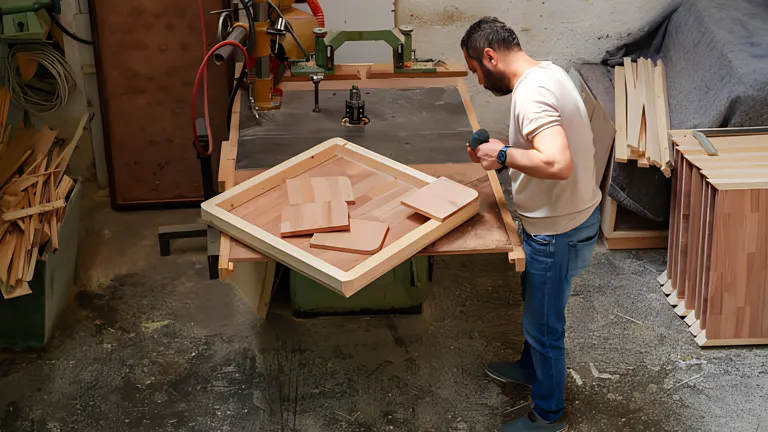
Embark on a journey through the world of woodworking shaper machines, where precision meets craftsmanship. In this comprehensive guide, we delve into the finest shapers the market has to offer. Whether you’re a seasoned professional or a passionate hobbyist, understanding the nuances of these powerful machines is key to elevating your woodworking projects. From motor power and spindle sizes to safety features and dust collection, our detailed review provides an in-depth look at each model, ensuring you make an informed decision for your workshop needs. Join us as we explore the capabilities and finesse of the best woodworking shapers available, helping you carve out perfection in every piece.
Summary: Best Woodworking Shapers
Powermatic Shaper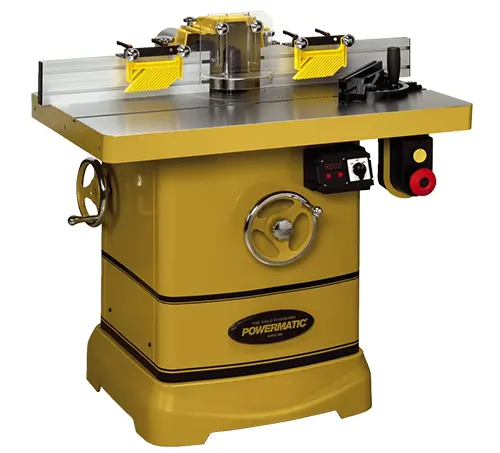 | Grizzly Shaper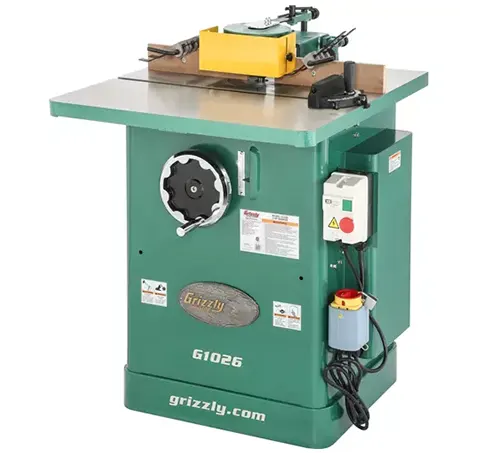 | Shop Fox Shaper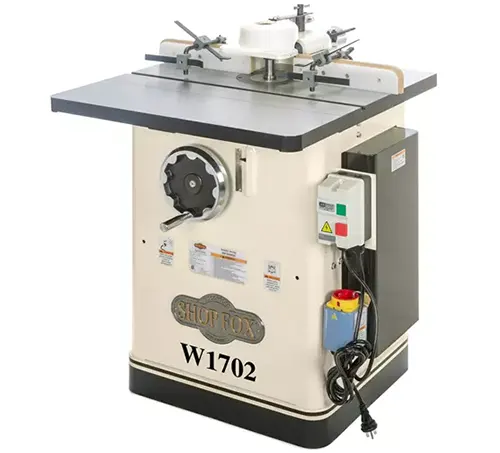 | Jet JWS-Shaper | Laguna Shaper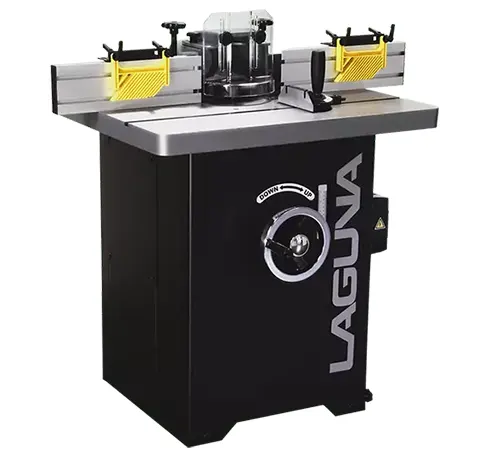 | Baileigh Shaper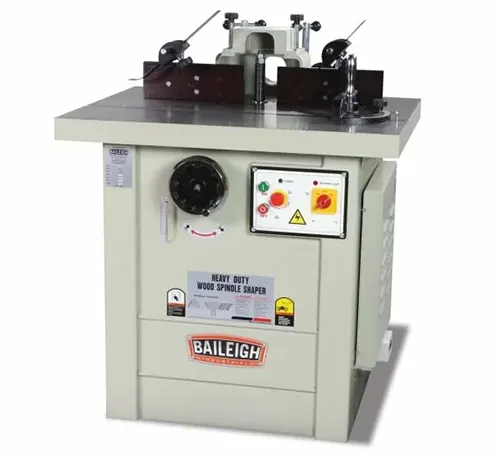 | |
|---|---|---|---|---|---|---|
| Motor Power | Up to 5 HP | 3 HP | 3 HP | 1-1/2 HP | 5 HP | 5 HP |
| Spindle Size | 3/4″, 1-1/4″ | 1/2″, 3/4″, 1″ | 1/2″, 3/4″, 1″ | 1/2″, 3/4″ | 1-1/4″ , 3/4″ | 3/4″ |
| Power Supply | 230V | 230/460V | 240V | 115/230V | 220V | 220V |
| Build Quality | High-end | Robust | Heavy-duty | Solid | High-quality | Industrial-grade |
| Price | $4,899.99 | $1,295.00 | $2,699.99 | $1,549.99 | $2,999.00 | $4,799.00 |
Rating | 4.5 ★★★★☆ | 5 ★★★★★ | 4.5 ★★★★☆ | 5 ★★★★☆ | 4.5 ★★★★☆ | 5 ★★★★☆ |
What is a Wood Shaper?
In woodworking, a wood shaper, often referred to simply as a “shaper” in North America and as a “spindle moulder” in the UK, is distinctly different. This tool usually features a motor-driven rotating cutter head and a workpiece that is fed manually.
Woodworking Shaper Top Picks
1. Powermatic PM2700 Shaper
| Motor Power (HP) | 5 |
| Motor Voltage (V) | 230/460, Prewired 230V |
| Spindle Diameter (In.) | 3/4″, 1-1/4″ |
| Table Size | 30″ x 40″ |
| Spindle Speed (RPM) | Two-speed, reversible |
| Dust Collection (CFM) | 600 |
| Spindle Travel (In.) | 4 |
The Powermatic PM2700 stands out as a top-tier shaper, offering an unparalleled blend of features for the discerning woodworker. Its robust 5 HP motor and large 30″ x 40″ precision-ground table cater to heavy-duty tasks with ease. The machine’s digital readout for spindle height is a game-changer, allowing for adjustments within .001″, which is crucial for precision tasks like aligning rail and stile cutters. The built-in caster system and quick-release lever for speed changes add to its convenience, while the extruded aluminum fence with T-slots enhances its versatility. This shaper, with its impressive specifications and attention to detail, sets a high standard for professional woodworking.
Pros
- Powerful 5 HP motor handles heavy-duty tasks.
- Large 30″ x 40″ precision-ground table provides ample work surface.
- Digital readout for precise spindle height adjustments.
- Two-speed reversible spindle offers versatility.
- Integrated casters for mobility.
Cons
- A higher price point may not be suitable for hobbyists or small-scale operations.
- The machine’s large size requires significant workshop space.
2. Grizzly Industrial G1026-3 HP Shaper
| Motor | 3 HP, 240V, single-phase, 12A |
| Spindle Diameters | 1/2″, 3/4″, 1″ |
| Table Size | 28-1/4″ W x 30-1/2″ D |
| Spindle Speeds | 7000, 10,000 RPM |
| Maximum Cutter Diameter | 5-1/2″ |
| Spindle Travel | 3″ |
The Grizzly G1026 3 HP Shaper is a solid choice for professionals seeking reliability and versatility at a competitive price point. It comes equipped with multiple spindle sizes and table inserts, offering flexibility for various cutter sizes. The two spindle speeds cater to both large and small cutters, making it a versatile tool for different projects. The precision-ground cast-iron table and adjustable two-piece fence provide stability and precision. With its comprehensive features, robust build, and Grizzly’s renowned customer support, this shaper is an excellent investment for any serious woodworker.
Pros
- The robust 3 HP motor is suitable for various tasks.
- Includes multiple spindle sizes for flexibility.
- Competitive pricing offers great value.
- Precision-ground cast-iron table for stability.
Cons
- Limited to two spindle speeds, which might restrict some applications.
- Some users might prefer more advanced safety features.
3. Shop Fox W1702 3 HP Shaper
| Motor | 3 HP, 240V, single-phase, 12A |
| Spindles | 1/2″, 3/4″, 1″ |
| Table Size | 28-1/4″ W x 30-1/2″ D |
| Spindle Speeds | 7000, 10,000 RPM |
| Maximum Cutter Diameter | 5-1/2″ |
| Spindle Travel | 3″ |
The Shop Fox W1702 3 HP Shaper is a powerful and flexible machine perfect for a wide range of woodworking tasks. It accommodates small to large cutters with its included spindle sizes and impressive cutter diameter capacity. The reversible spindle speeds add to its versatility. The shaper’s precision-ground cast-iron table and independently adjustable fence enhance its accuracy and ease of use. Shop Fox’s commitment to quality is evident in the shaper’s construction and the included 2-year warranty. The W1702 is a reliable and efficient tool for both hobbyists and professionals.
Pros
- 3 HP motor offers a balance of power and efficiency.
- Versatile with reversible spindle speeds.
- Comes with a 2-year warranty.
- Independently adjustable fence for precision.
Cons
- The footprint might be large for smaller workshops.
- The weight of the machine may require additional effort for setup and mobility.
4. Jet JWS-22CS 1-1/2 HP Shaper
| Motor Power (HP) | 1-1/2 |
| Motor Voltage (V) | 115/230, Prewired 115V |
| Spindle Speed (RPM) | 7000/9000 |
| Spindle Diameter (In.) | 1/2, 3/4 |
| Table Size (L x W) | 22-1/4″ x 18-1/8″ |
The Jet JWS-22CS is an excellent choice for those with limited space but who need a capable and versatile shaper. Its 1-1/2 HP motor is sufficient for a variety of tasks, and the two spindle speeds provide flexibility. The machine’s small footprint doesn’t compromise on a large and durable work area, thanks to its precision-ground cast-iron table. The independent fences with micro-adjustments and the built-in dust port are thoughtful additions that enhance its usability. Overall, the JWS-22CS is an ideal space-saving powerhouse for detailed woodworking.
Pros
- The compact size is ideal for smaller workshops.
- Lower power consumption due to 1-1/2 HP motor.
- Versatile with two spindle speeds.
- Built-in dust port for clean operation.
Cons
- Less powerful than other models, and not suited for heavy-duty tasks.
- Smaller table sizes may limit the size of workpieces.
5. Laguna Tools Compact Shaper 4 Speed
| Motor | 3HP, 1 Phase, 220 Volt 60 Hz |
| Spindle Sizes | 3/4″ & 1-1/4″ |
| Table Size | 32″ x 26-1/2″ |
| Spindle Speeds | 4000, 6000, 8000, 10000 RPM |
| Spindle Travel | 4″ |
The Laguna Tools Compact Shaper is a testament to the brand’s reputation for quality and precision. This shaper’s 4-speed settings and the flat poly-groove belt system set it apart, delivering smooth power transfer with minimal vibration. The spacious table and various spindle sizes accommodate a wide range of tasks, while the built-in wheel system adds mobility. The micro-adjustment on the fence and the forward/reverse spindle rotation emphasize its focus on detail and precision. It’s an excellent choice for professionals looking for a compact yet versatile machine.
Pros
- Four spindle speeds offer great flexibility.
- Quality build and finish, typical of Laguna Tools.
- Compact design with built-in wheel system for mobility.
- Micro-adjustment on the fence for precision.
Cons
- Higher costs might be a barrier for some users.
- Limited distribution channels.
6. Baileigh Industrial SS-3528 Spindle Shaper
| Motor | 5 hp, 220V, Single Phase |
| Spindle Speeds | 3600, 5100, 8000, 10000 rpm |
| Table Size | 35″ x 28″ |
| Includes Spindles | 3/4″, 1″, 1-1/4″ |
| Dust Port Diameter | 4″ |
The Baileigh Industrial SS-3528 Spindle Shaper is a robust and economical choice for any woodworking shop. Powered by a 5 hp motor and offering four spindle speeds, this machine can handle a variety of tasks with ease. The large table and included spindles, along with the standard 4” dust port, make it both user-friendly and efficient. Its comfortable working height and comprehensive fence assembly provide an excellent platform for precise work. Covered by a 1-year parts warranty, the SS-3528 is a reliable and high-performing shaper, ideal for both heavy-duty professional tasks and intricate woodworking projects.
Pros
- Powerful 5 hp motor for heavy and continuous work.
- Four speed settings provide versatility.
- Spacious table size accommodates larger projects.
Cons
- Higher price point.
- Heavier and larger, requiring more space and setup time.
Safety Measures for Operating a Wood Shaper
The wood shaper, often perceived as a hazardous tool, has gained a notorious reputation for causing serious workshop accidents. Tales of kickbacks and flying cutters contribute to its daunting image. However, I believe these incidents often stem from neglecting safety protocols and improper handling.
In the realm of woodworking, it’s easy to get carried away by the excitement of the craft. That’s why I consistently stress the importance of safety. A wood shaper, if not managed with caution, can be an extremely dangerous piece of equipment.
It’s crucial to respect the high-speed rotation of the cutter. This means maintaining a safe distance with your hands and correctly positioning the workpiece.
Always feed the workpiece against the cutter’s rotation. Failing to do so can lead to the machine forcefully snatching the workpiece or dragging your hands toward the cutter.
While it’s challenging to encapsulate all the safety guidelines for shaper use in this short overview, here are some key points:
- Ensure only trained individuals operate the wood shaper.
- Thoroughly read and understand the instruction manual before use.
- Always wear appropriate personal protective gear when using power tools, including the shaper.
- Avoid wearing loose-fitting clothes, gloves, neckties, jewelry, etc., during operation.
- Select appropriate cutters and spindle speeds for the task at hand.
- Regularly inspect the shaper’s moving parts for wear and tear, and check the spindle for any excessive wobble.
- Properly position safety guards before use.
- Adhere to the manufacturer’s recommended operating speeds.
- Before powering on, ensure the spindle aligns squarely with the table and that the knives are correctly adjusted and secured.
- Secure the workpiece firmly, possibly using a jig.
- Always cut in the direction of the wood grain.
- Avoid shaping stock with excessive knots or severe warping.
- Shape one piece of stock at a time.
- Refrain from making overly deep cuts in one pass; opt for multiple shallower passes.
- Gradually remove material in stages.
- For small pieces, shape a larger piece first and then cut it to the desired size.
- Position yourself to the side of the workpiece’s path, not directly behind it.
- Always turn off the power before making adjustments or when the machine is not in use.
What can you do with a wood shaper?
The wood shaper stands as the cornerstone of versatility in my workshop. Not only do I employ it for crafting decorative edges on linear pieces, but it also excels in tasks such as chamfering angles or stile components, and milling rails or panel raising.
This tool is exceptional for applying a wide array of profiles to various components, executing pattern shaping, and cutting tenons. Additionally, it adeptly handles milling components to their final dimensions, creating circular shapes, and fashioning rabbets and grooves. It’s also invaluable for producing lock miters, crafting tongue and groove profiles, and replicating vintage casing and sash elements, among numerous other functions.
While it’s true that other machines in the shop can perform these operations, a well-adjusted shaper for woodworking outshines them by completing many tasks with greater ease, speed, efficiency, and precision.
Comparing the Wood Shaper and Router
The wood shaper is essentially a larger, stationary version of a router, often described as an inverted router fixed within a frame. While both tools produce similar outcomes, their differences are substantial, making them distinct tools in woodworking.
Shapers are generally larger and more robust than routers. This increased power allows shapers to handle much bigger profiles, making them ideal for tasks like creating raised-panel doors and crown molding. They are also capable of running custom-made cutters with unique profiles, something beyond the scope of most routers.
It’s important to note that shaper cutters and router bits are not interchangeable. A collar can be added to a shaper’s cutter to imitate the guide or pilot tip found on router bits, limiting the depth of the cut.
The choice between a shaper and a router often depends on the specific requirements of a project. The shaper’s stationary setup is preferred for certain types of work, offering stability and the ability to handle larger, more complex tasks. On the other hand, the router’s portability is a significant advantage for projects requiring maneuverability and flexibility.
Related Articles:
- 5 Best Wood Router Tools 2023 Guide
- Best Jobsite Table Saws for 2023
- Best Table Saw Review and Comparison 2023
- 10 Best Miter Saw Stands of 2023
- 11 Best Miter Saw of 2023
FAQS
- Can a Wood Shaper Be Used for Intricate Inlay Work?
While wood shapers are primarily designed for larger profile cuts, with the right setup and jigs, they can achieve a reasonable level of precision for inlay work. However, for extremely intricate inlays, more specialized tools like routers or laser cutters might be more suitable. - Is There a Way to Retrofit Older Wood Shapers for Modern Safety Features?
Yes, many older wood shapers can be retrofitted with modern safety features like improved guards, feather boards, and emergency stop switches. However, the extent of retrofitting depends on the shaper’s model and design. - How Does Wood Species Affect Shaper Cutter Selection?
Different wood species, with their varying hardness and grain structures, require different types of cutters. Hardwoods typically need cutters made of stronger materials like carbide, while softer woods can be shaped with high-speed steel cutters. - What Are the Environmental Considerations When Using a Wood Shaper?
Environmental considerations include managing wood dust effectively to reduce air pollution, using electricity efficiently, and opting for cutters made from sustainable materials. - Can a Wood Shaper Be Used for Non-Wood Materials?
Wood shapers can sometimes be used for soft, non-wood materials like certain plastics or composite boards. However, this requires careful consideration of cutter type and speed to avoid damaging the tool or material. - How Did Wood Shapers Evolve Over Time?
Wood shapers have evolved from manual, hand-operated devices to electrically powered machines. Modern advancements include digital controls, improved safety features, and more precise adjustment capabilities. - What’s the Role of Computer Numerical Control (CNC) in Modern Wood Shapers?
CNC technology has greatly enhanced the capabilities of wood shapers, allowing for more precise and repeatable cuts, complex pattern creation, and greater efficiency in mass production settings. - Can Wood Shapers Be Used in Artistic Woodworking?
Yes, wood shapers are often used in artistic woodworking for creating unique profiles, textures, and shapes that can add a distinctive touch to artistic pieces. - What Are the Uncommon but Useful Accessories for a Wood Shaper?
Specialty jigs, digital readouts for precise adjustments, custom cutter heads, and advanced dust collection systems are among the lesser-known but highly useful accessories for wood shapers. - How to Maintain Antique Wood Shapers?
Maintaining antique wood shapers involves regular cleaning, oiling moving parts, replacing worn belts or gears, and occasionally calibrating the machine to ensure accuracy. It’s also important to use them regularly to keep them in good working condition.

David Murray
Forestry AuthorI'm David Murry, a forestry equipment specialist with a focus on chainsaw operation. With over 13 years of experience, I've honed my skills in operating and maintaining a wide range of machinery, from chainsaws to log splitters. My passion for the outdoors and commitment to sustainable forestry drive my work, which emphasizes safety, efficiency, and staying updated with industry advancements. Additionally, I'm dedicated to sharing my expertise and promoting environmental awareness within the forestry community.


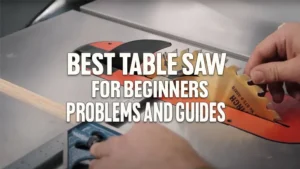








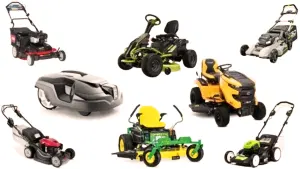

Leave your comment